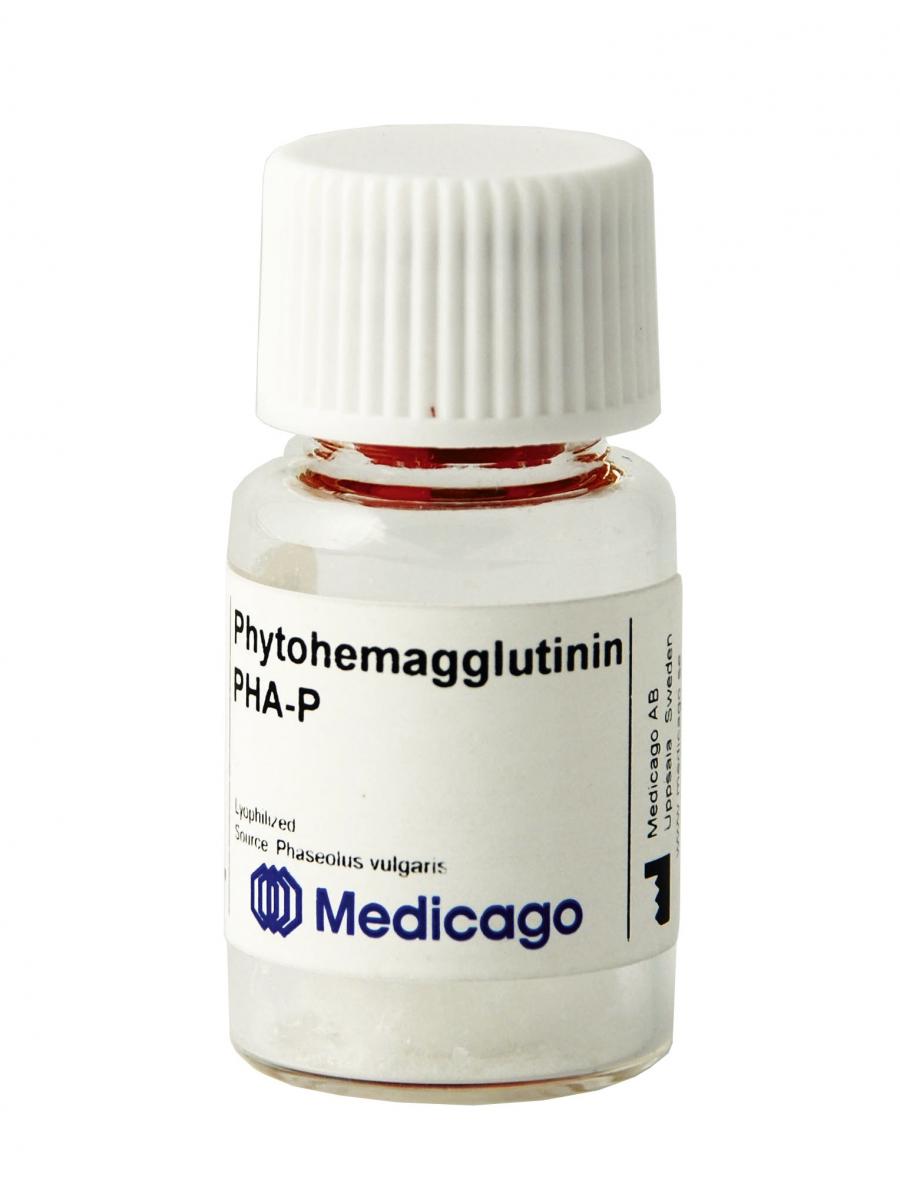Phaseolus vulgaris lectin P (PHA-P), native isomer composition
*** For pack size 1g, 10g or more, please contact us to inquire about pricing

Features
- Ultrapure quality
- Agglutinates leucocytes and erythrocytes
- Mixture of L and E subunits
- Sugar specificity: complex oligosaccharides
- Lyophilized powder
Product description
Phaseolus vulgaris lectin P or Phytohemagglutinin (PHA-P)is isolated
from red kidney beans and purified by affinitychromatography. PHA-P is a
mixture of isolectins containingL (leucoagglutinin) and E
(erythroagglutinin) subunits (1) incompositions L1E3, L2E2, L3E1, E4.
Thus PHA-P is the form of PHA before separation oferythroagglutinin
and leucoagglutinin. PHA-P has amolecular weight of 128 kDa and
specificity for complexoligosaccharides (1). PHA-P is not blood group
specific (2)and agglutinates human erythrocytes blood group 0 with
alectin concentration of ≤4 μg/ml.
Medicago’s PHA-P lectin is supplied as a white to
light-pinkessentially salt-free lyophilized powder from 50 mM
NH4HCO3,which evaporates during the lyophilization procedure. Thepurity
of the lectin is determined by SDS-PAGE generatingone single band. PHA-P
is available in vials or plastic bottlescontaining 1 g, 10 mg or 5 mg
of lyophilized powder and theproduct is to be used for laboratory work
only.
Applications
- Lateral flow erythrocyte separation
Typical subunit composition
Total L subunit composition: 60-65%
Total E subunit composition: 35-40%
L4 25-35%
L3E1 20-30%
L2E2 10-20%
L1E3 17-27%
E4 1-11%
Directions for use
The lectin may be reconstituted in a suitable buffer for yourapplication.
Shipping and storage
The product is shipped at -20°C, however for over-the-daytransport it
may be shipped at ambient temperature. Thelyophilized powder is stable
for more than five years fromproduction date when stored below -20°C.
After reconstitutionwith PBS, pH 7.4, the solution may be stored frozen
in workingaliquots for up to 12 months.
 Product Sheet
Product Sheet
References
1) Rigas, D.A. and Osgood, E.E. J. Biol. Chem. 212, 607, (1955)
(2) Kornfeld, R. and Kornfeld, S. J. Biol. Chem. 245, 2536, (1970)
If you cannot find the answer to your problem then please contact us or telephone +44 (0)1954 210 200